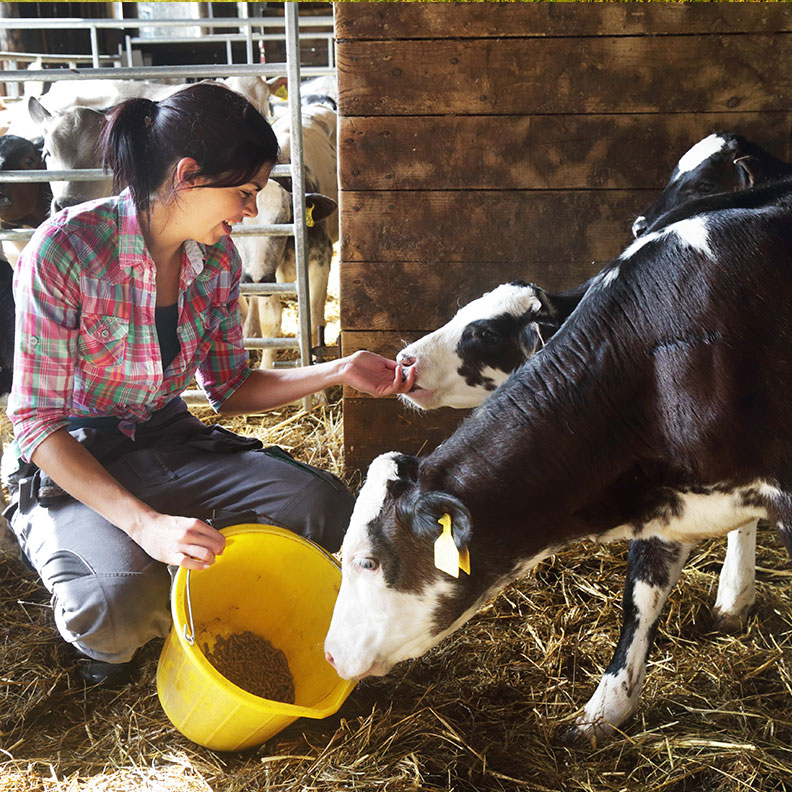Like any farmer, dairy farmers are busy. They’re overseeing their herd, managing the milking process and production. But paying attention to a few metrics will help ensure your operation is running efficiently and most important, profitably. When working with producers we like to look at the following:
Debt service coverage ratio
Current working capital position
Interest expense ratio
Net profit per cow
Cost of production per cwt
It’s especially important to pay attention to these metrics if you’re looking to obtain additional credit or take out a loan. Your bank will use these metrics to see if your operation is well run, profitable and you have healthy debt levels.
1. Debt service coverage ratio
We look at debt service coverage ratio (DSCR) to make sure an operation can pay their current debts. It helps us measure how much of your income is available to service your debt. We like to see a DSCR of 1.25 or above. This signals that the operation is profitable and not overloaded by debt. Your DSCR is especially important if you’re looking to apply for additional lines of credit or loans.
Calculating your DSCR is relatively simple:
Start by adding: Net farm income + non-farm income + term interest expense + depreciation expense
From this sum, subtract: Income tax expense, owner withdrawals/dividends and non-farm expenses
From the remainder, divide by: The sum of Term interest expense + term principal payments
2. Current working capital position
Your working capital position is another important financial metric to pay attention to. This ensures the operation can pay for upcoming obligations and assets can be turned into cash as needed. Specifically, we’re looking a working capital position of 1.5 or greater.
Working capital position is the ratio of your operation’s current assets, such as cash, feed/crop inventory, pre-paid expense divided by your current liabilities, such as accounts payable, taxes, accrued interest, and current portion due of term debt.
A strong working capital position will help you survive challenges such as market volatility or disease outbreak. Having cash reserves will also allow you to quickly respond to opportunities such as purchasing good buys on feed, fertilizer, or other operating expenses or even update equipment without the need for financing.
Another number that we like to look at is the working capital per cow which we like to see at $750 per cow. This is calculated similarly to your working capital but rather than dividing current assets by current liabilities this divides the current assets by total cow number. The reason this number is important to look at is because purchased feed per cow is around $1,500 depending on operation. This means that with the current assets you have 6 months of current assets to pay your feed bill.
3. Interest expense ratio
Your interest expense ratio is another indicator of your operation’s financial health and efficiency. It looks at how much of your income is going towards paying interest on loans. It is calculated by dividing the interest you pay on all loans for one fiscal year by your earnings before interest, income taxes, depreciation, or amortization (commonly referred to as EBITDA). For your operation to be considered strong, we like to see no more than 6% of your income being used to pay interest. More than 10% would mean you are spending too much money on interest.
4. Net-profit per cow
When working with our producers we like to see a net-profit per cow of around $375. It’s easy to calculate – Take the net profit from your operation on an accrual basis and divide it by the number of cows in the herd.
Your profit per cow should be high enough that you and your family can be financially secure, you can set aside money to invest in your operation and you can weather market volatility.
5. Whole farm cost of production
With any financial metric, its important to put it into context. That’s why we look at whole farm cost of production. Your whole farm cost of production takes into consideration:
Feed
Labor
Equipment depreciation
Herd replacement cost and overhead costs
It then takes the sum of those expenses and divides it by the hundredweights (CWT) sold to yield. Farmers looking to improve profitability will often look to lower their cost of producing a cwt. of milk. When working with producers we aim to have a cost per cwt of $16.50 for energy corrected milk.
Knowledge is power
While you don’t want to get bogged down in the numbers, maintaining accurate records, and working with your banker to make these calculations will help you make well-informed decisions about purchasing new equipment or livestock, buying more land or where you can reduce expenses. Knowledge is power and having the right information at your fingertips will help you improve your operation.

